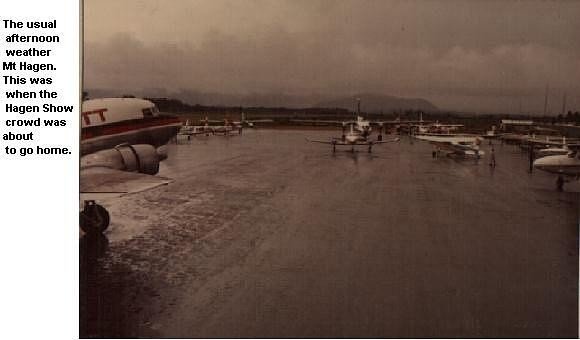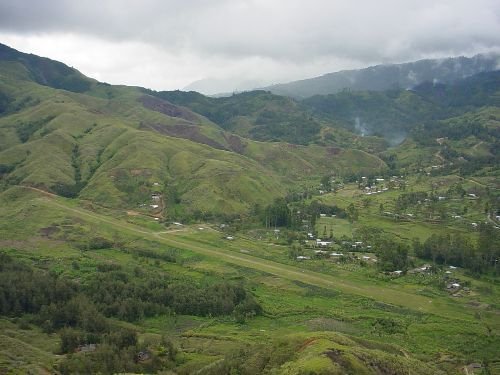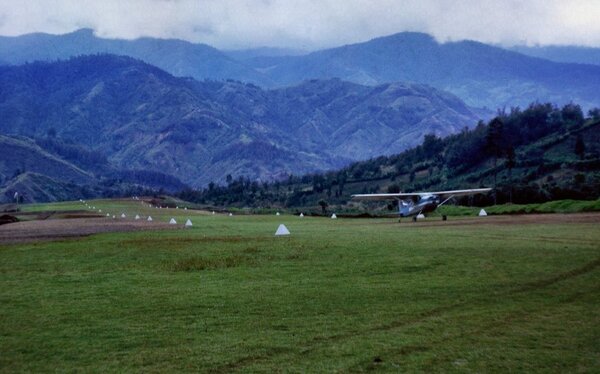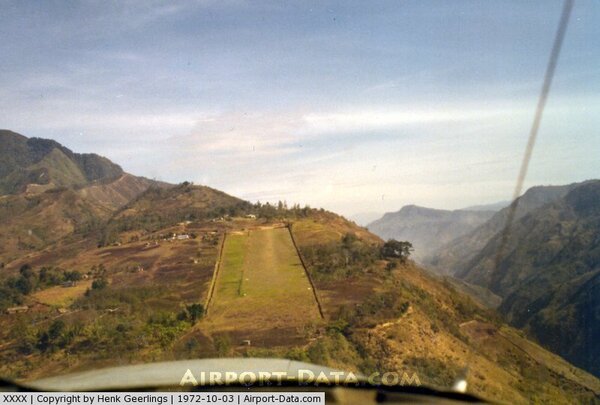-
Posts
1,752 -
Joined
-
Last visited
-
Days Won
39
Content Type
Profiles
Forums
Gallery
Downloads
Blogs
Events
Store
Aircraft
Resources
Tutorials
Articles
Classifieds
Movies
Books
Community Map
Quizzes
Videos Directory
Everything posted by poteroo
-
Sorry, no knowledge re this aircraft. You are really talking apples-to-oranges here: low wing + Lycoming v high wing + Rotax. Quite different aircraft.
-
Looking through various threads, I found this query from nearly 12 months ago. No responses, so thought it worth describing our experiences with over 1000 hrs of flying a Rotax 912ULS version of the Brumby R610 high wing: 1. the engine has pro's and con's in that it's smooth, quiet, fit-for-purpose....... but not cheap to maintain in a flying school environment. I mentioned the problems that Brumby struck with the 0-233 Lycoming some years back. It was an ambitious effort, but at least they have now settled on a more standardised model. 2. the airframe is vg for training - spacious, comfy, cool,well ventilated,good ergonomics,good vis, relatively stable in flight, ...... but fast our aircraft is not, and that's fine for training. 3. however, we have a spanking new R610 here for a private owner, and this aircraft is around 5-8 kts faster than our 2016 model. I think you could plan on 105KTAS comfortably. It seems to be all in the Whirlwind GA propellor, (which has replaced the previous Sensenich). 4. IMHO, a bit of tweaking in the airframe might just add another 5 kts to it. This wouldn't be weighty, or expensive. More anon. 5. In terms of BEW, MTOW and load availability - the R610 suffers in comparison to most other makes in this market. It's fine for myself at 73kgs, and my students of varying weights - because we only need to carry fuel for each mission, and no baggage either. So, easy to stay under MTOW. But, it's comforting to know that the extra weight is in the structural area, and the aircraft is strong. Would it be possible to lift the MTOW above 600kgs? : well, possibly, but why bother? It's always going to be a compromise with weight limited aircraft, and I think that we just have to match the aircraft to the purpose. If anyone wants to discuss specifics, you can always PM me on this forum. cheers,
-

Vans RV-7 crash, S of Charters Towers 23/04/2021
poteroo replied to onetrack's topic in Aircraft Incidents and Accidents
.................. and @ 150-160 KIAS, you are into cloud very, very quickly. At this speed, it's likely to be rough air flight, and that certainly upsets the balance of the non- IFR pilot. Slowing the RV aircraft down to 90 kts reduces the rough ride, and allows for a less frightening turnback. -

Vans RV-7 crash, S of Charters Towers 23/04/2021
poteroo replied to onetrack's topic in Aircraft Incidents and Accidents
Very, very fast in an RV7/7A. Because of the seating position, and the cutaway of the engine cowling, pilots don't realise that the RV is actually in a greater nose down + angle-of-bank than they perceive. Believe me, they get away very quickly! (1500+ on RVs and lots of test flying & instruction). Given that the normal cruise IAS is somewhere up near 140 KIAS at 7-8000 ft - you are really 'chancing your arm' when the aircraft has a Va = 123 KIAS. Remember, this is only if the MTOW is at its' maximum allowable - anything less, and the Va is less than the 123 KIAS quoted. It seems unlikely that with a single crew, this 7A was anywhere near MTOW - so its' Va would likely have been far less than 123 KIAS. RIP. -
Slipping with full flaps never seems to 'work' for me, certainly where the aircraft has a large flap maximum of 40▫️ , eg SuperCub, heavier Cessnas. Bar talk about a severe nose pitch down as the crossed controls are uncrossed in the flare is something I've tried to reproduce - but no. My RV9A has only 30▫️ max and even with idle power, & 60KIAS, wont sink faster than 600fpm. But, with nil flap, full crossed controls @70KIAS, it will exceed 1000fpm. Reassuring that it never creates a risky configuration. My Brumby high wing has only 30▫️ full flap, and slipping isn t comfortable nor effective. Better to reduce the lift by slowing down from 60 to 50, which then creates more drag and less lift. (remember the v2 in the Lift equation?) Anyway, full blooded slips down final don't really go over well with a load of tourists on a scenic, with a TIF if you're instructing, or your wife/friend on a private jolly. happy days,
-
The advice given that 'brakes are the best way to slow the aircraft' is, IMHO, the worst bit of advice ever in respect of achieving a short-field landing. Go ask a pro how it should be done. Firstly - cutting the power before the roundout will result in you being unable to hold the aircraft up with elevator, causing it to touchdown ' flat' on all 3 wheels. Then applying hard braking almost ensures that weight goes onto the nosewheel and off the mainwheels - where you hoped to achieve braking. Not the smartest idea! This leads to nosewheel damage, and often leads to loss of directional control. As to approach speeds, it's very simple. For standard approaches - use Vso x 1.3 where Vso is the stall speed at the current aircraft weight - not MTOW. For short-field, why not use 1.1 or 1.15 x Vso for the approach, but keep rate-of-descent to 500fpm using power. When you get to know your aircraft, then this allows you to make the last part of the approach in a configuration that allows an abbreviated roundout. The 1st key to landing on short/soft strips is to only use an into strip aim point if the strip is uphill and it's gusty too. Otherwise, aim to use the best part of the undershoot to flare across. Then, keep the power ON - until you have the nose well & truly above the strip. This gives you the aerodynamic braking which is very desirable where conditions direct you to not allow the nosewheel down early. The other operational item that you should consider with any aircraft that you intend to use for short-field work is to ensure the CG is in the 'middle 'ie, so that you don't run out of nose-up trim capacity. And yes, you should re-trip on approach - it's not hard, and allows you to keep a 'standard' feel in the pitch control. There is a lot of skill needed to do short-field stuff well and safely. Scaring the horses via the POH isn't the way to build confidence in pilots or your product. happy days,
-
The common perception is that training aircraft will have been subjected to all manner of mishandling with resulting probable airframe damage. This isn't necessarily so, but is certainly possible. Given the combination of student urgency to progress, low hours/experience instructors, pressure in circuit training, (eg, higher approach speeds and touchdowns due traffic), and a lack of what I'd call 'ownership care' with these major airport located aircraft - I believe you'd be buying some future costs. I understand they were not all hangared. Who knows whether every out-of-usual incident, eg, a heavy landing, is being reported? My experience says that junior instructors are loathe to do this because it marks them out as 'higher cost' staff. Where the aircraft is located with a smaller school, with the owner also the CFI, and only instructor, I believe the aircraft will be much more likely to be more gently operated, probably always hangared, kept clean and with a coat of polish. I'd go so far as to say that experienced CFI/owners don't subscribe to allowing students to shrug off heavy landings or unsafe approaches, and they certainly don't do manoeuvres which are not allowed as per the POH. The reason these aircraft will sell is that the industry is suffering from a shortage of used stock, finance is cheap, tax depreciation is attractive, and there is an increased demand for flying training due probably to no overseas travel. happy days,
-
Yes, the "unauthorised aerobatics" saga is still with us, and probably always will. Pilots are by nature risk-takers, and if you consider the widespread attitude that éndorsements' and ínstructors' are simply a way to extract money out of needy pilots - it's no surprise that some pilots will follow the DYO course of learning the aerodynamic facts of life. And, you can add flying the aircraft beyond Va in turbulence to the list of dumb things that renting pilots can do. If you are unaware of what this does, then dwell on the fact that every one of the C210s that have broken up in flight were high hours of low level flight, and/or, flown too fast in the vicinity of TS. If pilots don't understand the fact that Va is usually much less than Vno, and higher than the commercially accepted Vb, then they have not been taught these lifesaving operational requirements. The times that pilots have responded, (during a BFR), that '' top of the green is safe as" you'd be astounded at. In one test in an RV, we were near on 50kts above Va during descent on a warm summer day. Reduce power? "Hell no, why do you think I own a fast aircraft?" The other pet gripe of mine is in respect of non-reporting of heavy landings. Mate of mine had his SuperCub badly damaged by an instructor giving a tailwheel endo in it. Flying school denied any liability, saying óur instructors are so good that they would never, ever lose control of a tailwheel' He took his Cub back, and never cross-hired it again. That was good enough for me, so I was ready when the same school came knocking on the door to ask if they could hire my C170 for school use. Turns out their 6 instructors would have been lucky to total 50 hrs tailwheel time between them - hardly enough for one instructor to be allowed out to instruct t/w endos. Moral: don't hire out your lovely t/w for flight school use. What constitutes a 'heavy' landing is of course open to very wide interpretation, but these days, the chip in your EFIS/EMS is measuring G forces in flight and can be investigated. Just because it's not showing on a page doesn't mean it's not there - the smart owner will have decluttered it off the default pages at least. Others have connected an instrument measuring both G and flight time, with it located under an inspection panel in the floor. Catches the cheats every time! happy days,
-
Some manufacturers have placed a maximum temperature operating limit on their aircraft for reasons of structural strength but mostly for limiting their liability when a pilot tries to fly in clearly unsuitable conditions. I think Jabs are restricted to 39o? The older P charts for GA aircraft had a number of small graphs which brought into play many features in the takeoff, including altitude temperature, strip length, strip slope, strip surface, and wind. At the end of the tortuous following the current numbers for each - one arrived at a MTOW for that situation. Then, and here's the kicker - there was a 'reverse' line on the graph which then determined whether your aircraft, loaded at that weight, and under those conditions, could actually meet a climb gradient of 6 degrees? I think. It is often the case that you can takeoff from an airport, usually with a huge down slope, but your aircraft cannot meet a climb requirement, and you spend the next few exciting minutes going below the level of the strip from which you've just taken off. It often ended badly. Having survived quite a few hours flying commercially in high and hot conditions, I'm not about to advise anyone untrained in handling them, to start overloading their considerably lower HP RAAus aircraft . Don't do it! Have a personal limit on conditions as well as all the other stuff. Fly early in the day.
-
I'd suggest the RAAus Operations Manager or Assistant Ops Manager for a chat. You might also send a written request, (email), for your file from that flying school - it is yours, and they must provide it within a reasonable time. If it doesn't turn up, then the RAAus Ops Mgr would be very interested. Keep at it.
-
No point in a BFR unless both you and the instructor have a good discussion beforehand and you fess up to anything you feel uneasy about, or which you don't ever attempt. I often hear of BFRs where the instructor methodically works thru the entire syllabus, chews up hours & hours, and the pilot learns SFA. It's important that the instructor checks thru your logbook and gains insight to where you actually fly, and checks those areas thoroughly. I favour really checking out their cross-wind capability, their ability to assess a strange airstrip and land on it, a low level EFATO, W&B, and their engine management skills. This covers quite a lot of the practical things that pilots do, and often....quite badly. I clearly recall going for my very 1st 'BFR' in the early 80's, along with a few other C180 and C182 owners. The CFI asked us what was our payload in these aircraft, and the local bright spark replied 'push it all in, and if we can close the doors, she's ready to fly' It floored him! happy days,
-

Anyone thinking of buying a new aircraft from overseas?
poteroo replied to SSCBD's topic in AUS/NZ General Discussion
Notwithstanding the possibility of a good 'buy' with a higher exchange rate - the other importation costs have really blown out. Checkout your seatainer costs, insurances, breakdown and packing costs, customs and other duties, relevant taxes, then getting it onto the register here isn't cheap. There's a lot of hassle and worry with doing it yourself, and perhaps the best way is to engage with an established shipper/consolidator group. -

Soar Aviation placed in Administration
poteroo replied to turboplanner's topic in AUS/NZ General Discussion
Soar just the tip of the iceberg for insolvencies after 31st March. Tough for the students, who have in many cases have had their training unduly stretched out, leaving them with a HECS debt, but no licences. Guess who really picks up the bill with these educational facility failures: correct, the long suffering taxpayer, because the student fails to complete the course and disappears, or completes it but cannot get a job as a 737 captain! Said to be over A$70b owing in HECS debt and it is growing. -
Yes, but the reason is probably that in a maximum rate + minimum radius turn, without power, your nose attitude will need to be quite alarmingly lower than any 'normal' descending' turn in order to keep it unstalled. If you need to minimise the time taken in the manoeuvre, then you'll be flying an AoB of ( optimum is about 43o - according to experienced pilot Barry Schiff), and that requires you to keep an IAS of at least 20% higher than Vs. Vs is of course variable according to MTOW, and also due to the amount of slipstream 'wash' flowing over the inner wing: no power & stopped prop = nil help in reducing Vs. Schiff has done some actual in flight testing on this - google it.
-
Torque really only comes into play with much higher HP engines, usually with CSUs, than we use in RAAus types. Are you sure it isn't being confused with the 'slipstream effect' caused by the twisting wash of displaced air around the fuselage and particularly affecting the vertical fin and attached rudder?
-
Essentials for Ag Flying. Have also seen these used in PNG flying presentations. Only one missing is of a wide ýellow'streak on a pilots dorsal fuselage! Unstoppable' P&W turbines, multiple engines, and GPS are only useful in getting you safely to the scene of the accident! Powerlines continue to breed, mountains remain the same height, valleys have not become wider, and weather continues to be a major hazard in all aviation. With all that, have a safe 2021.
-
The Leahey brothers walked into the main highlands, (the Wahgi Valley) in 1936. Beyond there it remained pretty much unexplored until after WW2. I was fortunate enough to have been posted to Mt Hagen, (as a 'didiman' in 1961), and lived on the Dept of Ag Research Station at Korn Farm - about 10nm SE of the main Mt Hagen township of approx 50 Europeans. (see pic). I supervised a 'line' of local warriors when the current Kagamuga / Mt Hagen airstrip was cleared of bush in August 1961. When it was burnt off, to the sound of thousands of whooops by the locals, the smoke filled the entire Wahgi valley for 2 days or more and inbound DC3 pilots reported IFR! The old 'town' strip has long since been built over. The new airport was still pretty basic when we last saw it during our departure from the Hagen Show in Sept 1969, (see pic of wet and gloomy wx). for a nervous 'VFR' flight back over the hills to Port Moresby - took 2.5 hrs if I remember, including several diversions, and a climb to 14,000 to squeek thru. The pic of the USAF wreckage on the side of Mt Wilhelm, (14,000'), was possibly a result of IFR flying when we've since heard that the maps they used understated the tops of most PNG peaks by over 1000' The pic of Tabibuga, (Jimi River), is just over the north wall of the Waghi valley, on the north face of the main ranges, and from where the river runs north to join the mighty Sepik. Not worth a thread on this site as there is already a huge thread on pprune if anyone wants to look at that. It was vg in the beginning, but has developed into a bit of a personality thing, as 99% of the followers have long since left PNG. Old farts just rehashing, and enhancing, their youthful adventures. There are a load of 'lessons-to-be-learnt' from the flying up there, but in Australia, it boils down to: 1. Keep out of cloud 2. Don't overload 3. Carry much more fuel than you think needed 4. Learn how to handle your aircraft at low speeds. 5. Keep out of cloud. 6. Keep out of cloud......... happy days,
-
I flew into Wabag, Wapenamunda and Mt Hagen when posted to Hagen in 1961 and it was quite a place. Places like Maramuni would not have been built until at least the late 60's so unlikely to have been any mechanised help. The Yanks reportedly did do some work on the emergency strip at Bena Bena, (near present day Goroka), and apparently the Japanese aerial searched for this strip - but due weather, they never located it. In the 60's, in the Enga region, the patrol posts of Kompiam, Laiagam, Tambul were just being built, as were a few 'mission'strips which were mostly serviced by MAF using C180/185 types. Maramuni is located on the north 'face' of the highlands, and as far as I know, the Japanese never went near the place. They pretty much kept out of the highlands proper. Wau/Bulolo and Kokoda are surely mountainous, but not the real 'highlands' as we knew it. The pic below is of Simbai, some 5700amsl in the Adelbert Ranges, from where the rivers run N to the Sepik, ie on the N side of the main highlands just a bit east of the Jimi River. happy days,
-
Contrary to what we expected this year, the interest in learning to fly is highest I've seen in 15 years. Especially so as we now have a better view of the future of international travel and the development of vaccines for CV19. The TIFs coming through are a mix of people from 15yo to 60yo, and their reasons are many and varied. Very few are thinking about captaining a big jet with a red tail, nor are they aspiring to burning avtur in an F18. A proportion are looking to use an aircraft to widen their tradie business, and some are just looking to fulfill one more item on their 'bucket' list. Hangarage is at a premium here, being driven by many aircraft owners vacating the Perth metro area for personal/family reasons, plus a more relaxed sea-change and less ATC oversight of your every move. Some are even purchasing any hangar that comes up for sale, well before they complete a shift of family down here: perhaps recognising the massive costs of building a new hangar and the hassles and delays in obtaining a leased site on the airport. As it is, hangar lease costs run at $11/m2 pa, so that's $3600 pa before I start looking at hangarkeepers insurance, ($800), and çommercial' landing fees for the Brumby, ($750 pa). With 4 aircraft in the hangar, the per aircraft cost is about $1100 before any margin is added. Demand for instructing in GA is very high, with a lot of BFRs, RV conversions, T/W endos and formation endos being sought. The local GA school charges between $132 and $176/hr for the instructor on non-school aircraft, for these activities. My RAAus school operates a 5yo Brumby highwing and charges $220 dual or supervised solo, and $165 private hire. Personally, I charge out at $88/hr for owner aircraft work, regardless of whether it's RAAus or GA. That includes an hour of brief/debrief which seems to be an industry wide expectation, but it seriously limits what can be done in a day. Demand for RAAus is above what it has been in pre-CV19 days, but would be higher again if it wasn't for the stupidity of CASA in calling the RPPL/GFPT an RPL and thus muddying the water for prospects. I can't recall any recent prospect gasping at our prices, probably because they had just been quoted $300/hr for a C150, or $380/hr for a C172, or even higher at Jandakot. Price seems much lower on peoples' priorities than does receiving steady, competent service from an experienced instructor. Private owner activity in both GA and RAAus has picked up since September. Our local aeroclubs'RV9A has flown more hours in the last 3 months that in the rest of the year - the club is actually running at a profit!! We've conducted flypasts for our local RSL for Australia Day, Anzac Day and recently, Remembrance Day - getting the message out that light aircraft activity is happening, and that we're actually not all that shabby. Local RSL now have a dedicated promotions person, and that is helping with recognition of the civilian activity here. What has changed over the past few years is that pilots are not doing the long distance 'holiday' flights that used to buildup hours by 20-30 per flight. Rather, it seems that flights are more in the 2-3 hr size and are to travel to a specific event, be it a flying or other. Scammers have been much more in evidence this year, with all manner of requests for 'quotes' for a complete course, and more requests to 'help' with visas and HECS docs etc. I'm sure that other flying schools are also being pestered by these as well. Whether RAAus is able to mount any big promotion or not, it seems that there is a reasonable increase in demand industry wide. I'm not convinced that any national, (expensive), learn-to-fly promotion is really going to achieve much. From long experience with the press & media, it seems that local contacts, helpful info, a local 'visit-our-airport' day, and taking the reporter for a TIF works better for local interest. How/if RAAus can assist with these is of great interest to me. happy days,
- 133 replies
-
- 10
-

-

-

-
I'm unaware of any such publication as a set of ''practice' exams for RAAus. Perhaps there are some such questions at the end of the chapter in the Bob Tait series but I don't have a current set of them to check. Why don't you ask him? I'm sure there are none, or at best a few, in the Jim Davis PPL book. These early days ín-house' exams are not particularly onerous, and provided you keep your ears open, you'll pickup on stuff during your early flights which will strengthen your book learning. Ask your instructor to read out a couple of questions and see if you understand what is being sought. Many students freakout at the sight of multiple choice questions, but if you stay calm and read the question very carefully - then usually the wrong/stupid/impossible answers stand out. Exams must be sat under flying school supervision. Good luck.
-
Ompkali, Eastern Highlands, PNG (1969) in PA-23-250Turbo C. Twas around 15% and absolutely no go round off final. Over 5000'if I remember. Talair used to fly C402s and Barons into there. Needed near full power to get up the last bit onto the ledge that served as the parking area. The other frightener was Keglsugl, 8400 amsl and the highest strip in PNG.
-
Found that I had converted onto a Socata Rallye in 1970 at Jandakot. Ferried it to new owner but didn't record where. I have it recorded as VH-UQH, a MS 894A/220..... whatever that translates to. It flew very well, but if I remember, had a very narrow track and didn't feel too comfy in crosswinds, Very STOL. Rather tight cabin? happy days,
-
I can't remember a thread with which I'm so in agreement with! CASA, and its' antecedants DCA, CAA, DOT have long been a handbrake on general aviation. Having been involved with them all since 1962, I'm grief-stricken to hear that their funding has shrunken, and they might, (just might), have to live within their means. Oh, happy days - let them wither in our Covid year of unhappiness.
-
along the lines of 'gamble responsibly'
-

Engine cowl of Cessna 140 comes open after takeoff.
poteroo replied to red750's topic in Aircraft Incidents and Accidents
Not surprising to me. I had the experience of the RH side engine cowl unlocking and flapping up alarmingly not more than 15 mins into the ferry flight of my Cessna 170A, (VH-OSZ), after leaving Moorabbin, (1992). Pulled power instantly, reduced IAS to 55-60, landed on Laverton. All happened quickly as we were only about 1500'. Met by concerned RAAF security, but they turned out 'friendly'. The old centre line hinges held it on very well, and there was no discernable damage. Could have been some serious effects on flyability had the whole cowl taken off! Luckily for me, my pax was not only a student pilot but was also a LAME - most fortunate! The repair was rather crude though - bought a drill at shopping centre, drilled several carefully located holes, and installed several self tappers. Away we went within 2 hrs, and safely pushed the old machine back to WA. No further dramas with the cowls, although the owner after me did instal very classy latches with locking pins. The old 40's Cessna cowl locks were quite unsafe, and my advice has since been to convert them to proper locking pin type mods. (C120, C140, and C170 owners take note). happy days,



Mission(RHS).jpg.688cd8c9495579835a15e2811e828120.jpg)







.thumb.jpg.8069e91235cf6ac30bdd80d49d559575.jpg)


